Pinisi, a traditional sailboat from Sulawesi, Indonesia, refers to the precise arrangement of masts, sails and rigging. Indonesian shipbuilding is an ancestral art, interwoven with myths and legends surrounding its origins. This craft has its roots in the villages of Ara and Lemo-Lemo, where the first modern Pinisi was built in 1906.
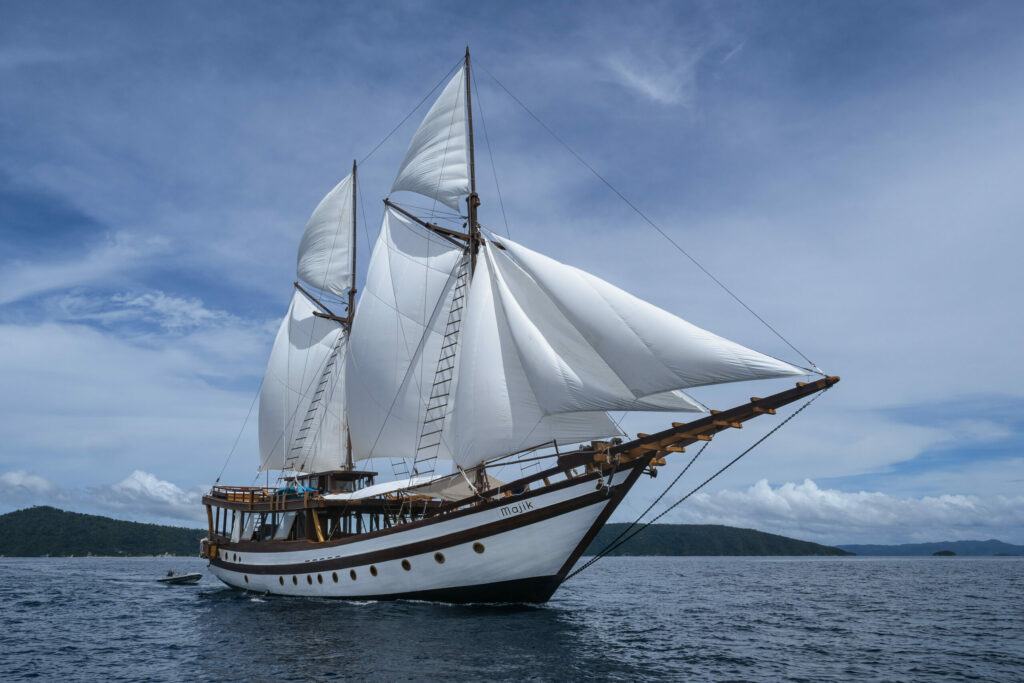
Pinisi characteristics
Ethymologically, Pinisi refers to a type of rigging, i.e. a specific configuration of masts, sails and ropes.
The traditional pinisi is characterized by its two-mast configuration. A large mast at the bow and a smaller mast at the stern make up its original structure.
The pinisi’s sails are an essential element. Initially equipped with seven to eight sails, this yacht uses these elements to be propelled by the wind. Unlike most Western ships, the two main sails do not open by lifting the spars to which they are attached. The sails are said to be « out », like curtains fixed around the center of the masts. It should be noted that the number of sails may vary according to modifications made to the original design.
The wooden hull is a fundamental element in the construction of the pinisi. While the term refers to a type of rigging, it says nothing about the shape of the ship’s hull. This part of the boat is designed by hand, and the know-how is passed from generation to generation. The shape of the hull is carefully adapted to ensure stable, efficient sailing.
Myths, legends and origins of the Pinisi
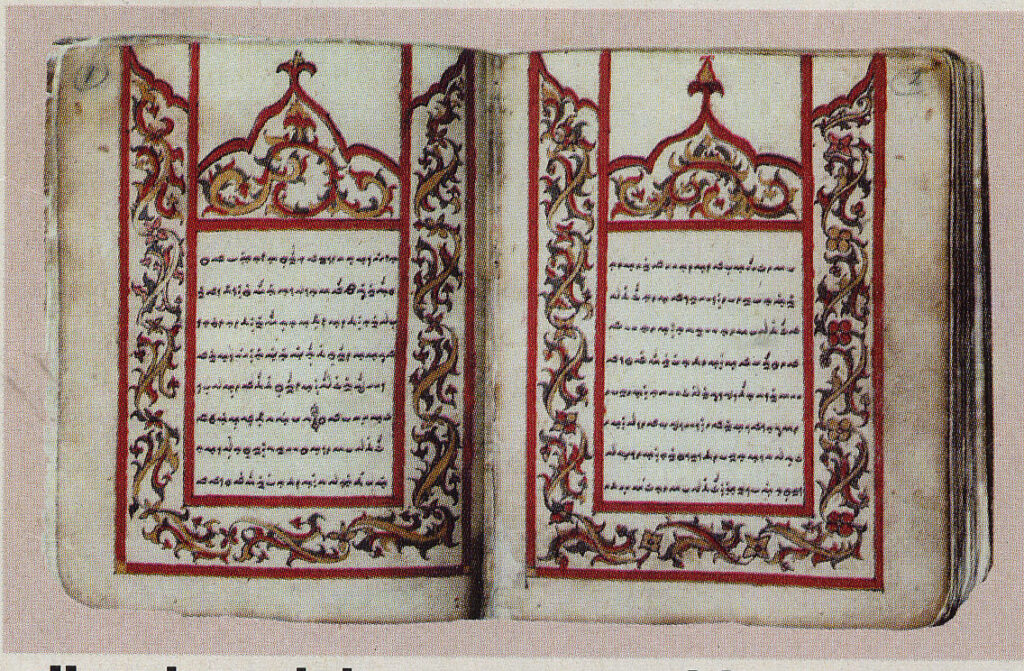
The origins of Pinisi are shrouded in various local legends. Among these is the story of Sawerigading, one of the main characters in the Bugis epic « Sureq Galigo« . One of the region’s best-known Pinisi, the Galigo, takes its name from this legend.
The legend says that Sawerigading, in order to avoid an incestuous relationship with his twin sister, was granted a magically created vessel to travel to a place where a girl resembling her would reside. However, when he breaks his promise never to return, the ship sinks. Subsequently, hull parts, ribs, planks, and masts wash up on the shores of three villages. The locals, intrigued by this mysterious event, reassemble the scattered components, thereby acquiring skills in shipbuilding and navigation.
However, it is widely believed that this is just a legend. Instead, the appearance of the Pinisi is attributed to Sulawesi sailors in the 19th century. They created new boats by combining various ideas from other parts of the world. They used large rectangular sails called tanjaq, which they mixed with the fore and aft sails of European ships.
The construction process
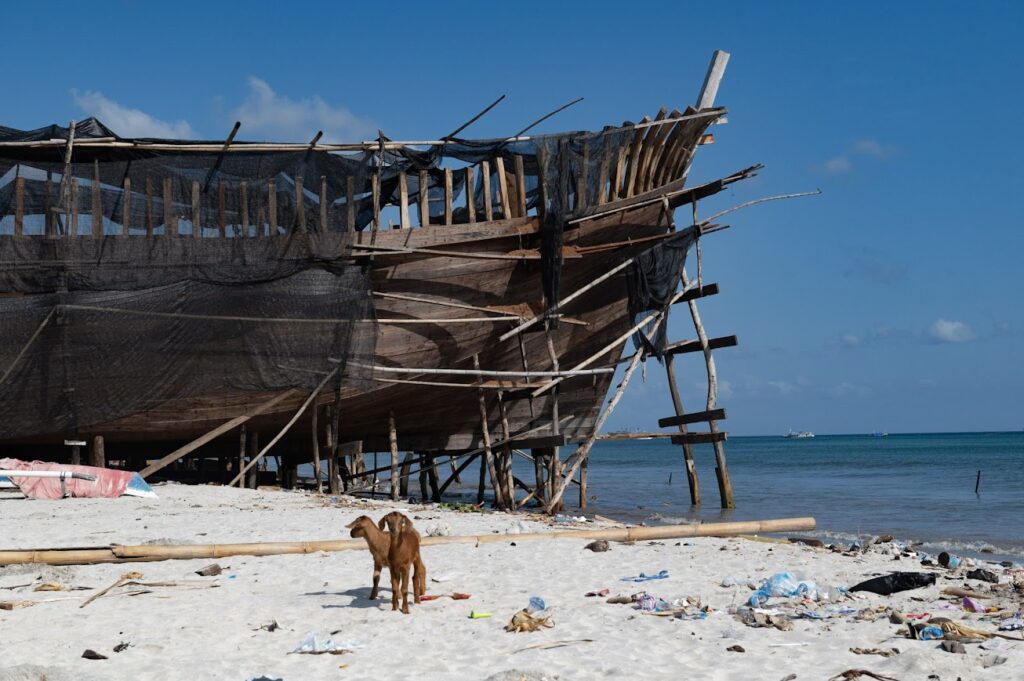
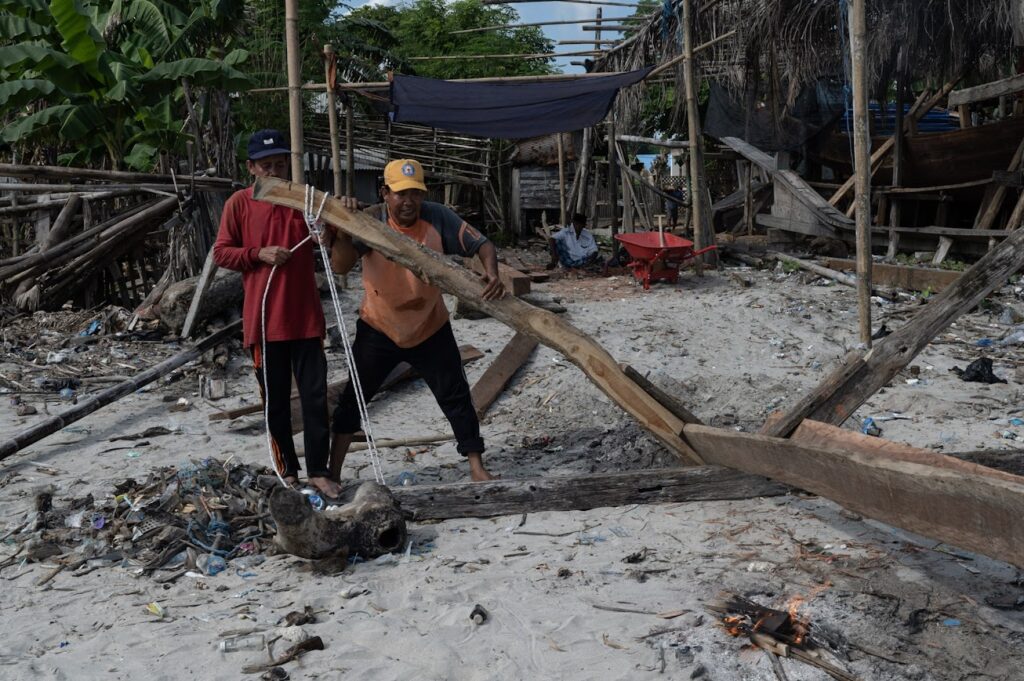
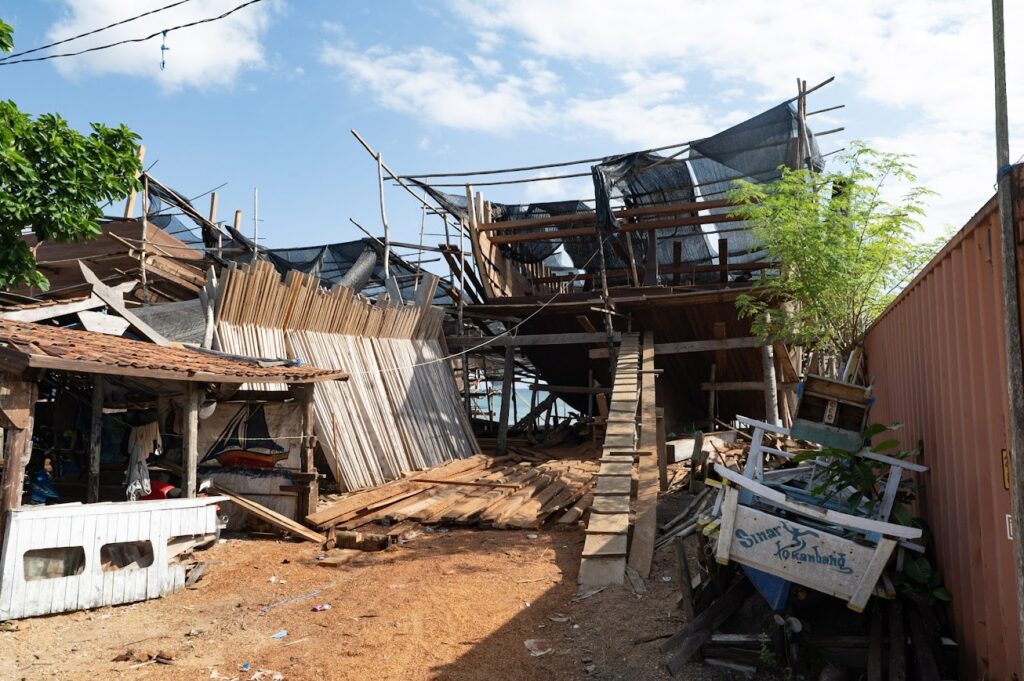
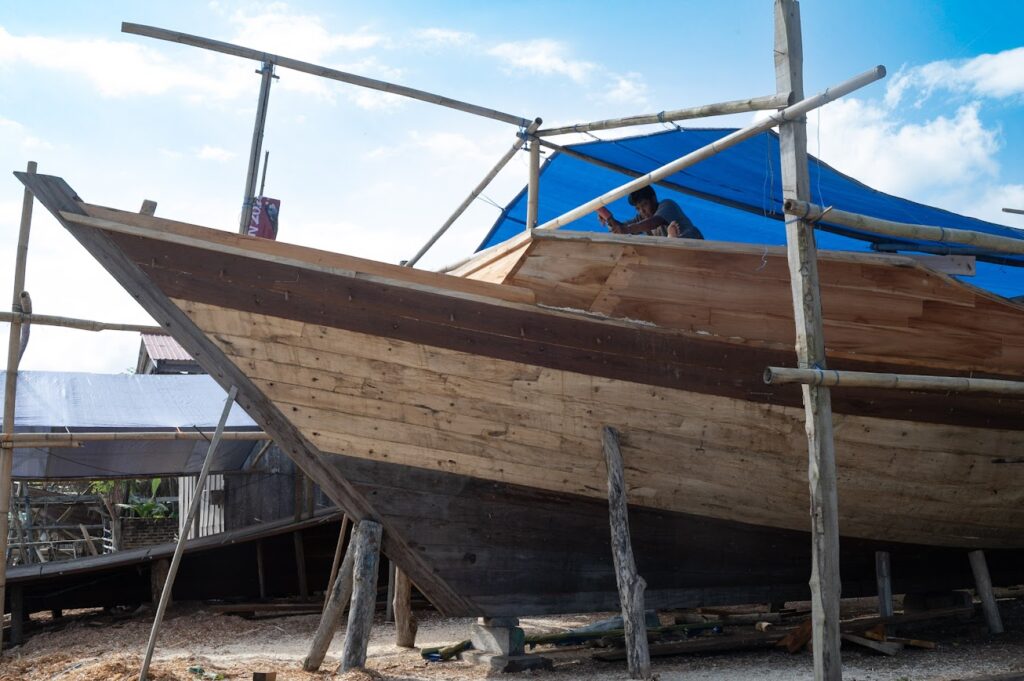
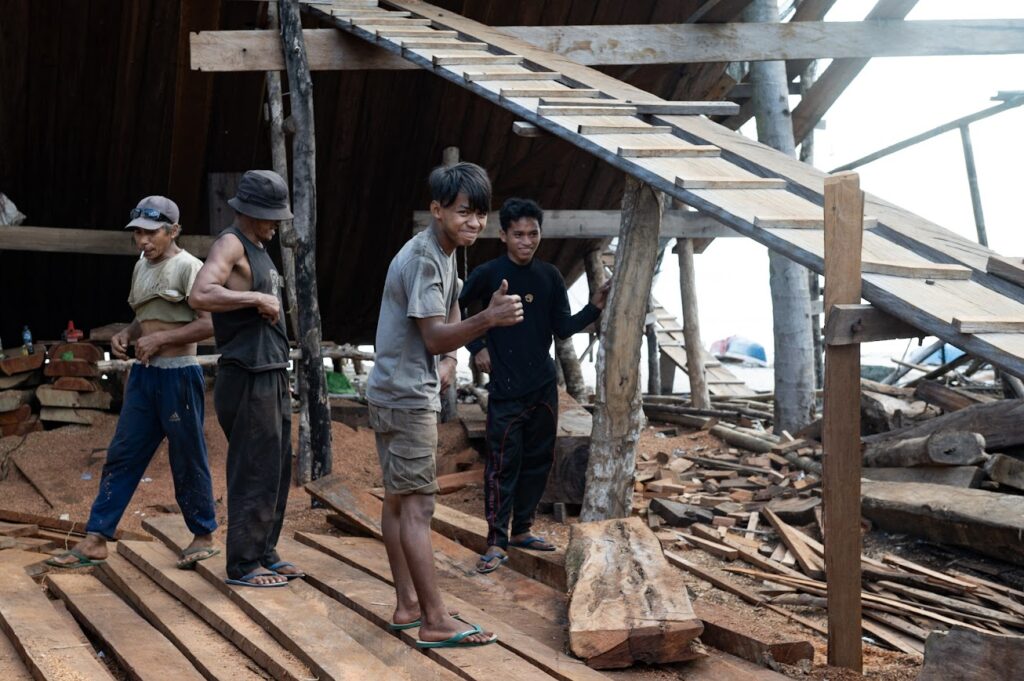
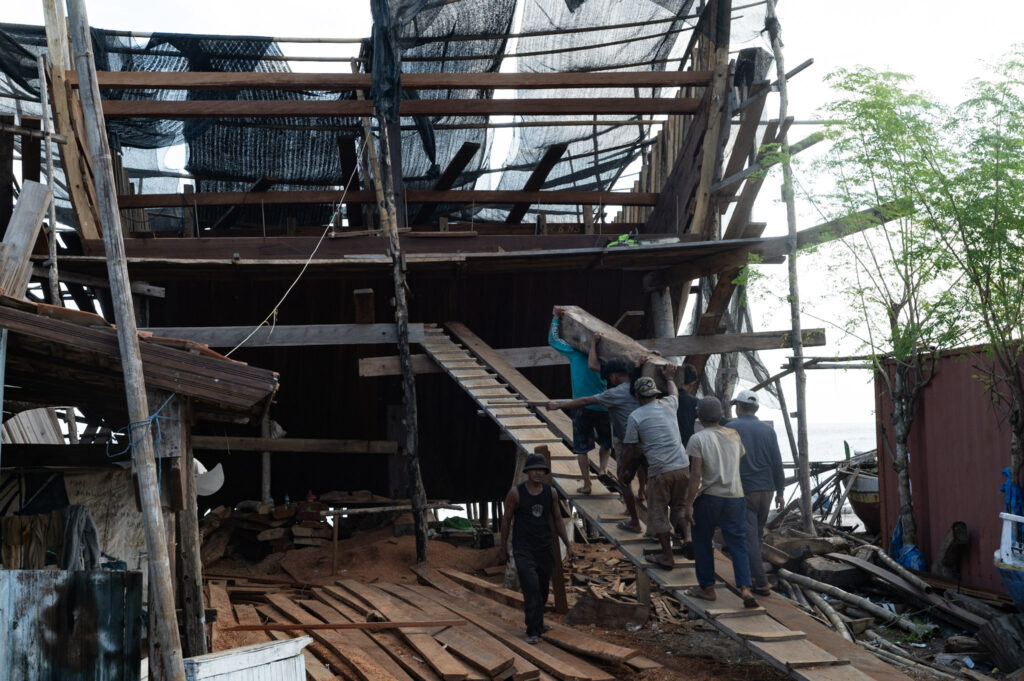
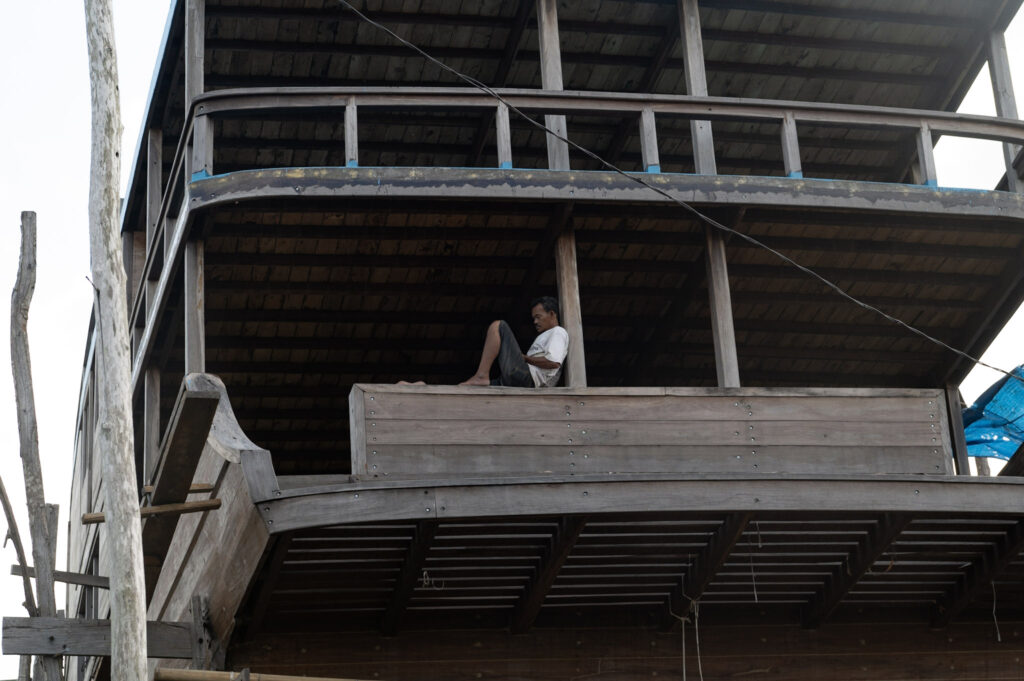
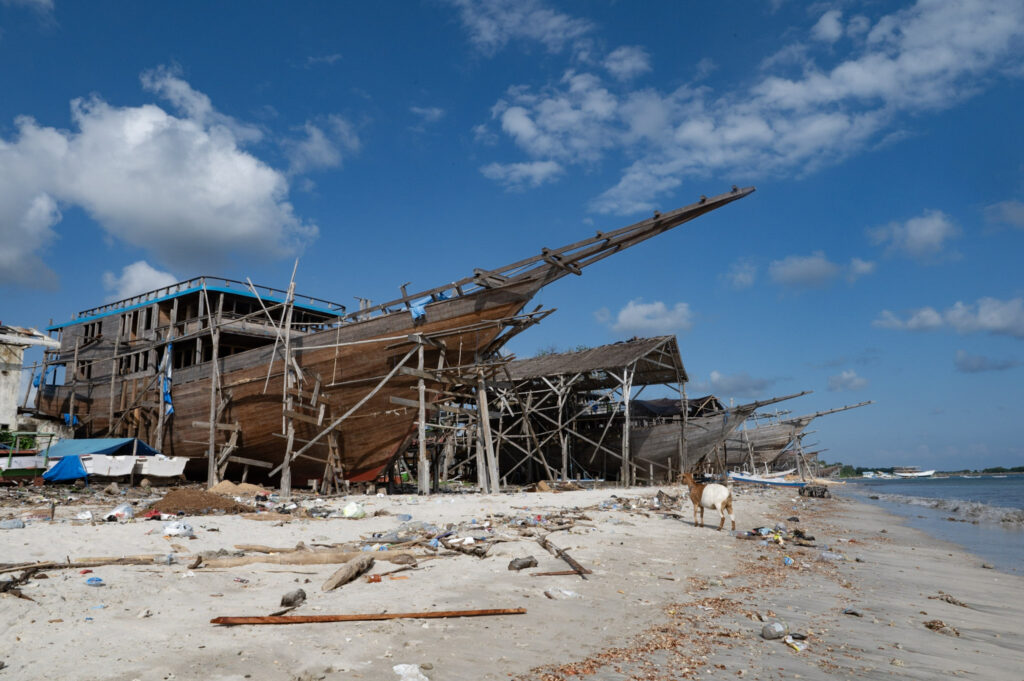
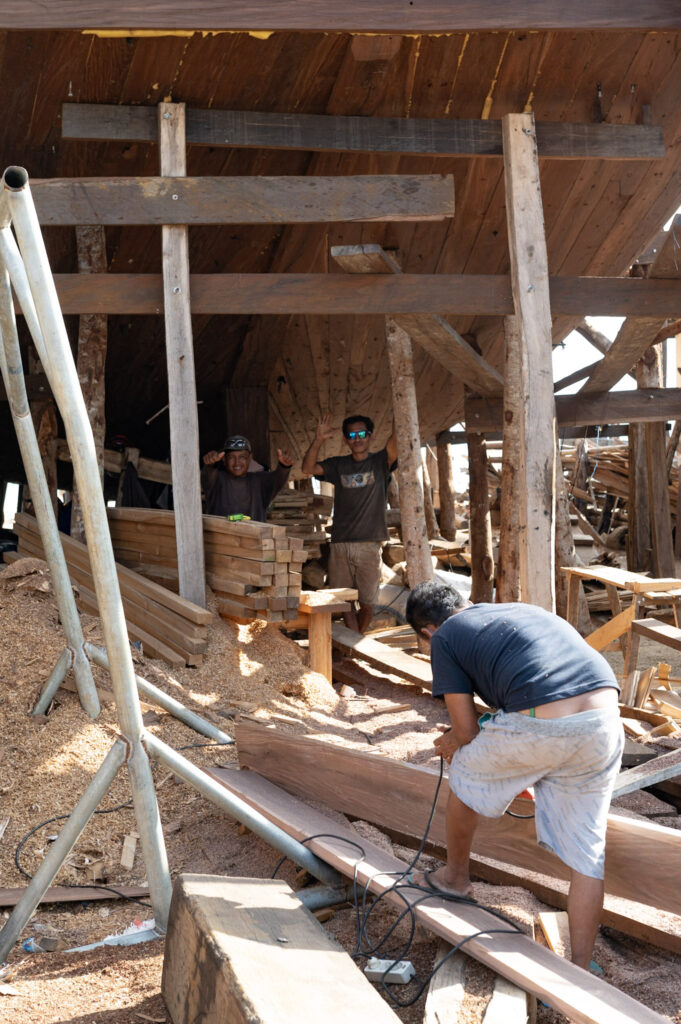
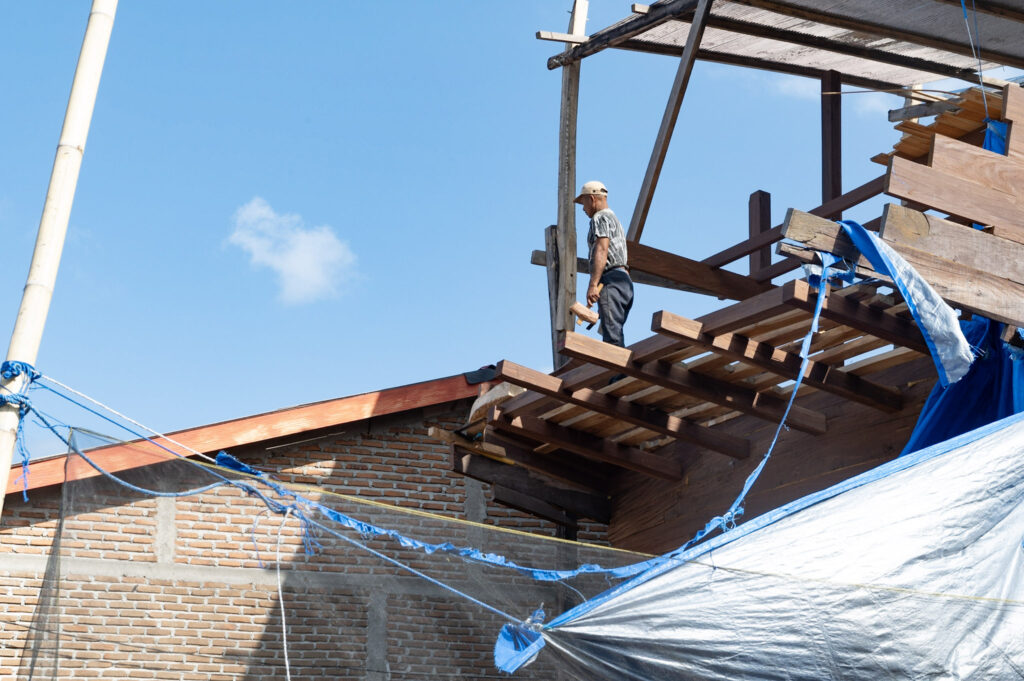
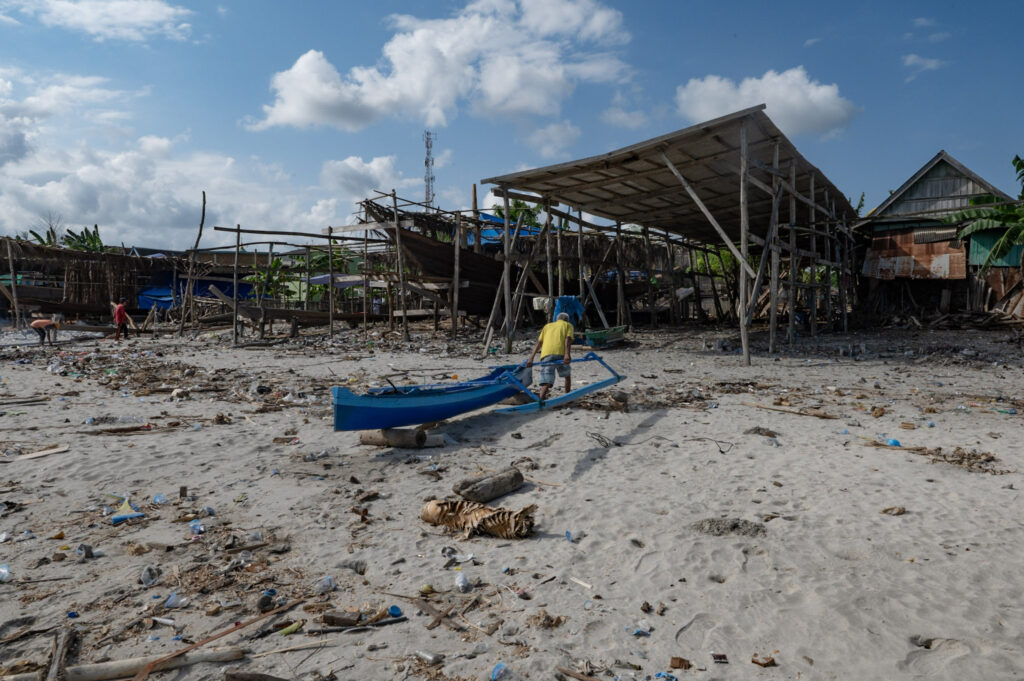
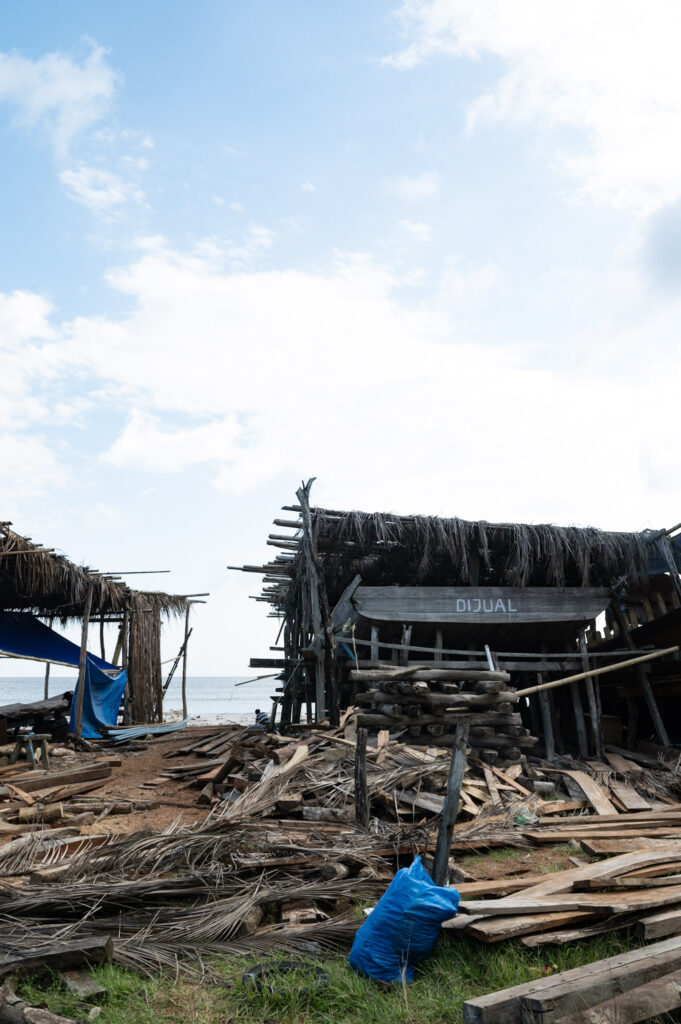
The Pinisi undergoes traditional construction in a rudimentary yard. A site manager named « punggawa » leads the process, accompanied by a team of specialized workers called « sawi ». Ritual ceremonies, rooted in ancestral maritime traditions, surround this construction. Nowadays, most pinisis are built in large yards along the beaches in the region of Bira, in South Sulawesi.
Workers initially collect wood on the fifth and seventh days of the month, associating the number 5 with good fortune and the number 7 with good luck. Before felling a tree, they hold a ceremony to expel the spirit residing in it, sacrificing a chicken as an offering. They choose the type of tree based on its function, and they cut the wood in the direction of the grain (from the bottom to the top) to guarantee strength. After collection, they dry the wood.
A specific ceremony governs the laying of the keel. The forward keel block symbolizes masculinity, while the aft keel beam represents femininity. Workers position the keel facing northeast, cut it after a specific ritual, and throw the cut part into the sea if the front beam breaks. The fragment of the stern beam is kept at home, symbolizing the sailor’s wife faithfully awaiting his return.
The installation of the keel clamping boards accompanies the Kalebiseang ceremony, followed by the Anjarreki ceremony to reinforce the keel. Workers caulk the hull with barruk tree bark, and they make the allepa (caulking) with a putty composed of lime and coconut oil. They finish by rubbing the putty with papaya skin.
The Pinisi launching ceremony
The Pinisi’s building process culminates in its launch, preceded by the traditional Appasili ceremony, involving water-soaked leaves waved around the vessel. Depending on the boat’s weight, workers sacrifice a goat for a vessel under 100 tons and a cow for a vessel over 100 tons. They cut off the front legs and hang them from the deck, while tying the rear legs to the stern. Launching occurs at high tide and sunrise, accompanied by mantras and prayers.
Pinisi or Phinisi?
The spelling variation between « Pinisi » and « Phinisi » stems from the Western preference for using « Ph » to represent the « f » sound instead of the equivalent aspirated « p » in Indonesian. While the correct spelling is Pinisi, Phinisi is also widely used and accepted.
The Pinisi of Our Time
The Pinisi has become very popular on luxury and expedition cruises. These ships often feature luxurious interiors and diving equipment. The Pinisi has undergone considerable adaptation since the 1970s. Nowadays, they are mainly motorized, with shorter masts and a wider deck structure for passengers and crew. However, despite these adaptations, the Pinisi remains a symbol of know-how and tradition.
From luxury liveaboards to more budget-friendly options, check out our selection of liveaboards in Indonesia and let’s start planning the trip of your dreams!

